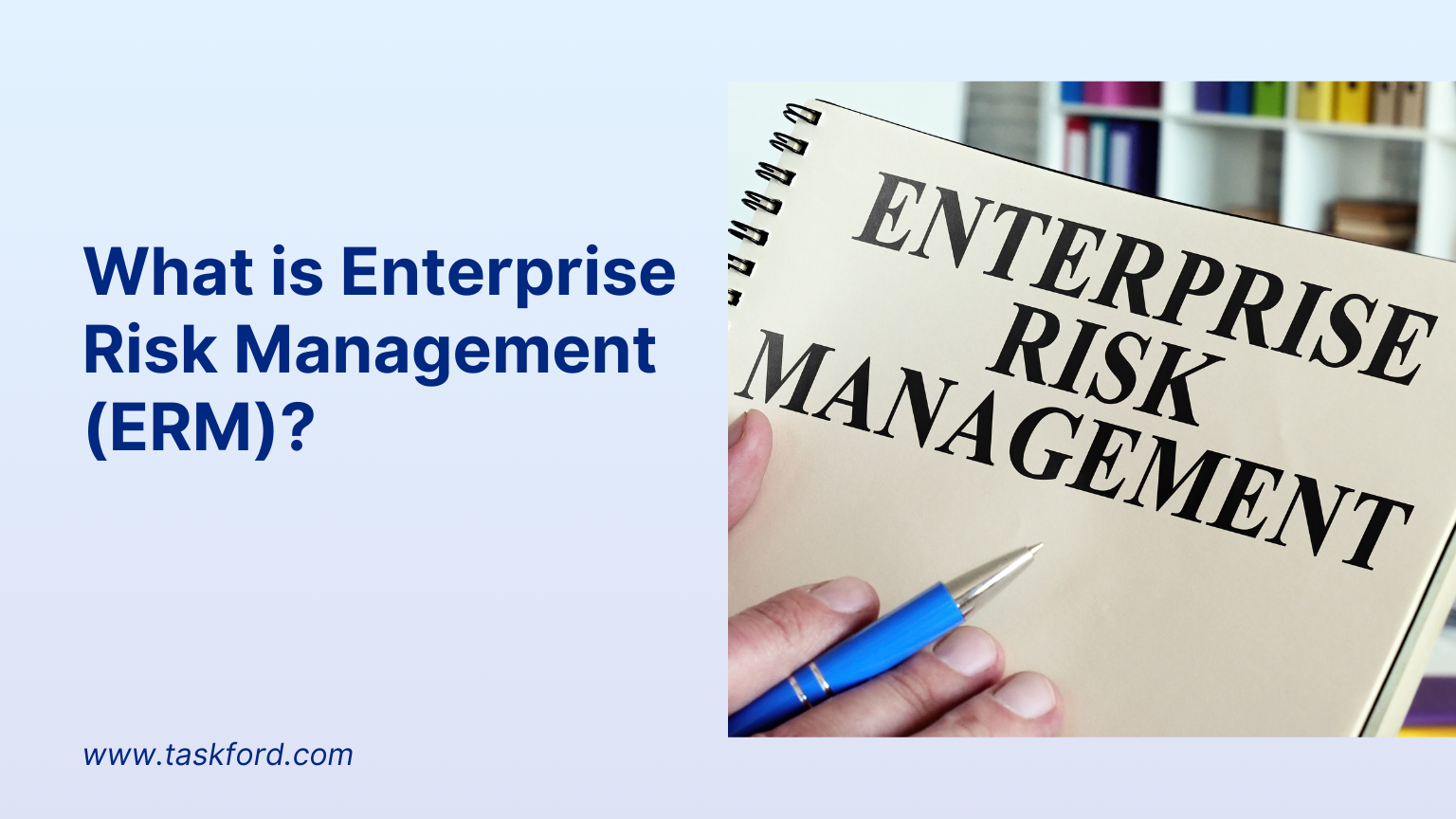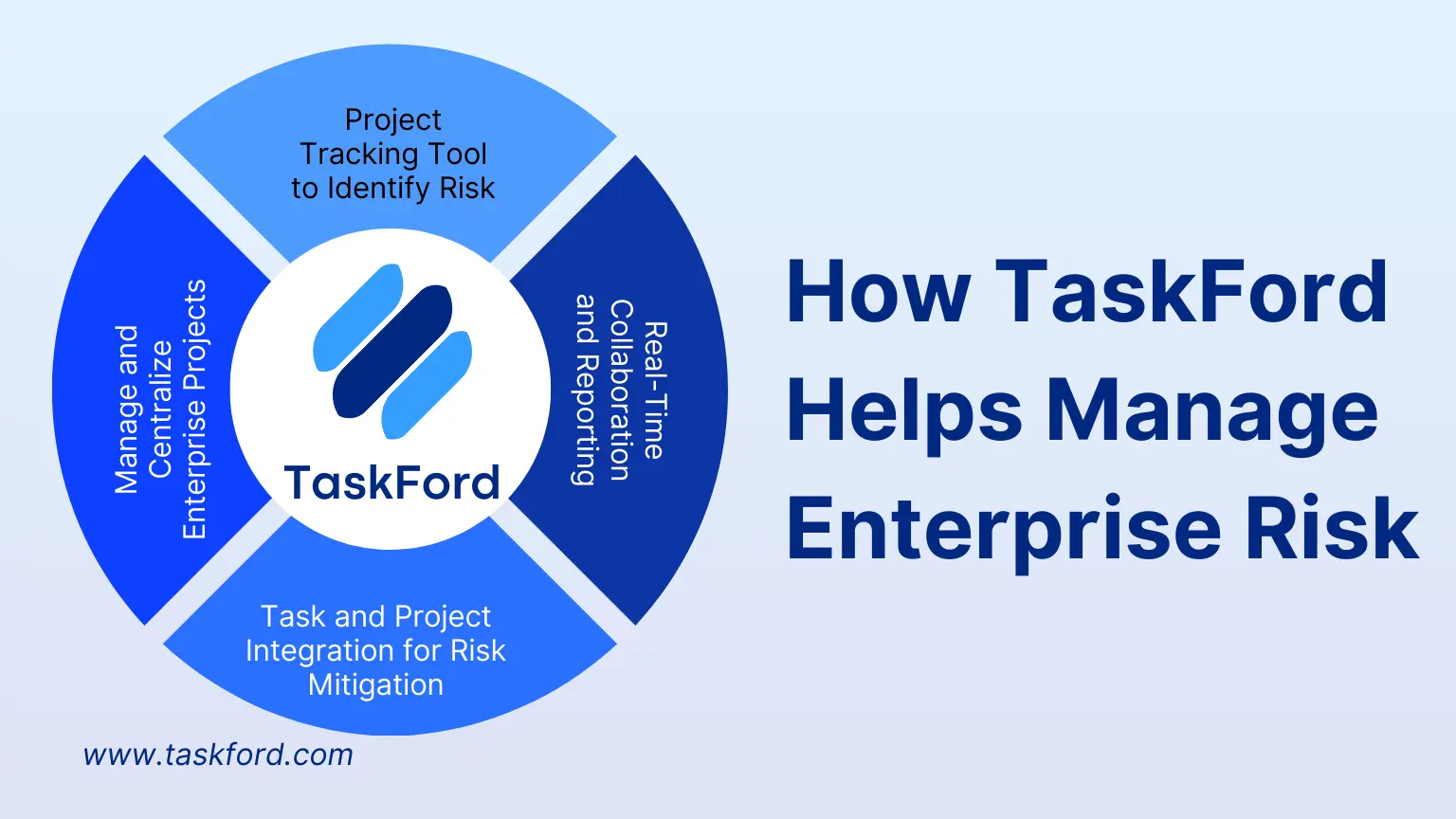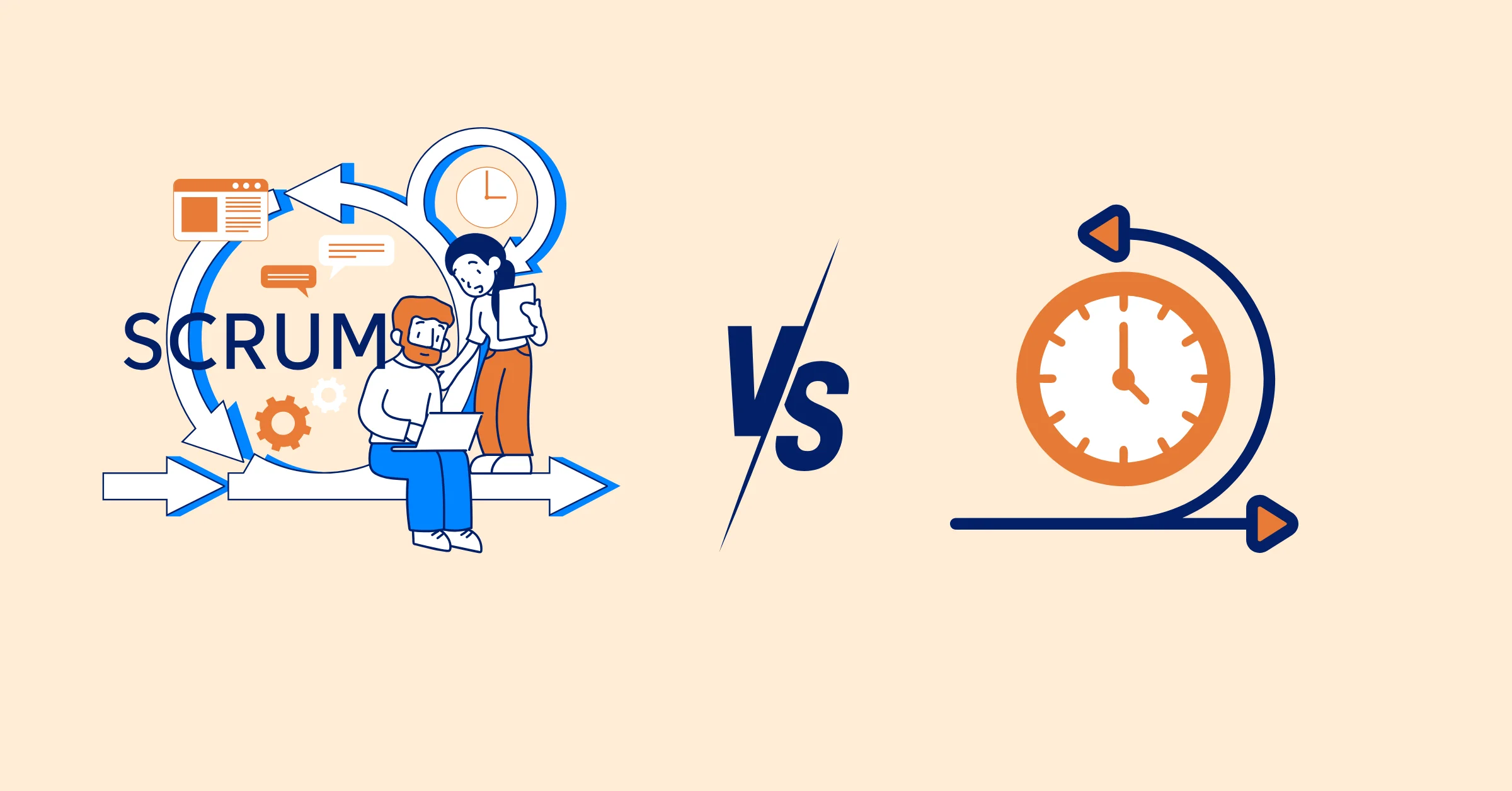Enterprise Risk Management (ERM): What It Means and How It Works
Learn what Enterprise Risk Management (ERM) is, why it’s essential, and how to implement it. Discover key strategies and tools to mitigate risks and drive business success.
Running a business always comes with a certain level of risk. Whether it’s financial uncertainty, cybersecurity threats, or compliance issues, every organization faces challenges that could disrupt operations or impact long-term success. That’s where Enterprise Risk Management (ERM) comes in.
ERM isn’t just about avoiding problems, it’s about proactively identifying, assessing, and managing risks so businesses can stay resilient and make smarter decisions. A solid ERM strategy helps companies protect their assets, comply with regulations, and create a more stable foundation for growth.
But what does ERM really involve? Why is it so important? And how can businesses put an effective risk management system in place? In this guide, we’ll break down what ERM is, why it matters, and how you can implement it in your organization. Plus, we’ll explore how tools like TaskFord can help businesses stay ahead of potential threats with ease.
Key Takeaways
- Understand what Enterprise Risk Management (ERM) is and why it’s crucial for business stability.
- Learn the key components of an effective ERM framework and how to implement them.
- Discover how risk management integrates with project planning, resource allocation, and enterprise solutions.
- See how TaskFord helps businesses track risks, enhance collaboration, and centralize project management.
What is Enterprise Risk Management (ERM)?

Definition of ERM
Enterprise Risk Management (ERM) is a holistic, organization-wide approach to identifying, assessing, and addressing risks that could impact a business. Unlike traditional risk management - which often focuses on specific risks within individual departments, ERM takes a broader, strategic view of risk, ensuring that all potential threats are considered and managed in alignment with the company’s overall goals.
At its core, ERM helps businesses:
- Identify potential risks before they become major issues.
- Assess the likelihood and potential impact of those risks.
- Develop and implement strategies to mitigate or manage risks effectively.
- Monitor and adapt strategies as the business landscape evolves.
By integrating ERM into daily operations, organizations can minimize disruptions, protect their assets, and create a risk-aware culture that leads to better decision-making and long-term success.
Types of Enterprise Risks
Every business faces risks that can disrupt operations and impact long-term success. ERM categorizes these risks into six key areas:
- Operational Risks – Disruptions in daily business activities due to system failures, human errors, or external events.
- Financial Risks – Potential monetary losses from market fluctuations, credit issues, or poor financial management.
- Compliance Risks – Legal and regulatory violations that lead to fines, penalties, or reputational damage.
- Cybersecurity Risks – Threats to data security, including hacking, breaches, and ransomware attacks.
- Reputational Risks – Damage to a company’s public image due to negative press, social media backlash, or unethical practices.
- Strategic Risks – Poor business decisions, shifting market conditions, or competitive pressures that threaten growth.
Recognizing these risks is the first step toward a strong Enterprise Risk Management strategy, allowing businesses to proactively mitigate threats, enhance project management efficiency, and ensure long-term stability.
Why is Enterprise Risk Management Important?
Every business faces uncertainty - financial risks, cybersecurity threats, compliance challenges, and market shifts. Enterprise Risk Management (ERM) helps organizations stay ahead of these risks, ensuring stability, smarter decision-making, and long-term success.
The Cost of Poor Risk Management:
Ignoring risks can lead to financial losses, reputational damage, and project delays. Companies like Blockbuster failed to adapt to industry shifts, while cybersecurity breaches like Equifax cost billions. Poor risk management can derail operations and project timelines, making ERM a necessity, not an option.
ERM Ensures Compliance:
Regulations like SOX, GDPR, and ISO 31000 require businesses to manage risks effectively. A strong ERM strategy helps avoid legal trouble, protect customer data, and maintain trust with stakeholders.
Key Components of an Effective Enterprise Risk Management Framework

A strong Enterprise Risk Management (ERM) framework helps businesses proactively identify, assess, and mitigate risks before they impact operations. Here are its four essential components:
1. Risk Identification
The first step is recognizing potential threats, whether internal (cybersecurity, operational failures) or external (regulatory changes, economic downturns). Businesses use audits, data analysis, and industry benchmarking to spot risks early, ensuring smoother project management and business continuity.
2. Risk Assessment and Prioritization
Not all risks carry the same weight. Companies must evaluate risks based on likelihood and impact, using tools like risk heat maps and quantitative analysis. This process ensures that high-priority risks get addressed first, preventing costly disruptions.
3. Risk Response and Mitigation
Once assessed, risks require action. Businesses can:
- Avoid – Eliminate high-risk activities.
- Mitigate – Reduce impact through preventive measures.
- Transfer – Shift risk (e.g., through insurance).
- Accept – Prepare for manageable risks.
A well-structured response keeps operations running smoothly, even under uncertainty.
4. Continuous Risk Monitoring
Risk management isn’t a one-time task, it’s ongoing. Businesses must track risks in real-time, conduct regular reviews, and integrate risk controls into project management workflows to stay ahead of evolving threats.
Steps to Implement Enterprise Risk Management in Your Organization

Implementing Enterprise Risk Management (ERM) requires a structured approach to ensure risks are identified, assessed, and mitigated effectively. Here’s a step-by-step guide to integrating ERM into your business operations:
1. Define Risk Management Goals and Scope
Start by aligning ERM with your business objectives. Identify key risk areas - financial, operational, cybersecurity, and compliance - and set clear goals. This step ensures that risk management supports enterprise solutions, driving efficiency and long-term stability.
2. Establish a Risk Governance Structure
Assign roles and responsibilities within the organization. Senior leaders should oversee ERM strategy, while department heads manage risks within their domains. A clear governance structure improves accountability and ensures seamless resource planning to address potential threats.
3. Develop Risk Identification & Assessment Processes
Use tools like risk registers, heat maps, and scenario analysis to identify and evaluate risks. Prioritize them based on likelihood and impact, ensuring the most critical threats receive immediate attention. Integrating risk assessment into project planning prevents disruptions and enhances decision-making.
4. Implement Risk Response Strategies
Once risks are identified and assessed, develop strategies to manage them:
- Avoid high-risk activities.
- Mitigate risks through preventive measures.
- Transfer risks via insurance or contracts.
- Accept manageable risks with contingency plans.
A well-structured response minimizes disruptions and keeps operations on track.
5. Leverage Technology for Risk Monitoring
Modern enterprise solutions offer AI-driven analytics and automation tools for real-time risk tracking. Integrating ERM with resource planning and project management systems ensures continuous monitoring and swift action when risks emerge.
How TaskFord Helps Manage Enterprise Risk

Effective Enterprise Risk Management (ERM) requires the right tools to track, assess, and respond to risks in real time. TaskFord streamlines this process by providing enterprise solutions that integrate risk management into daily operations. Here’s how TaskFord enhances ERM:
Project Tracking Tool to Identify Risk
Risks often arise during project planning and execution. TaskFord’s project tracking tool helps organizations identify potential risks early by monitoring timelines, dependencies, and resource allocation. By flagging delays and bottlenecks, teams can take proactive steps to mitigate risks before they escalate.
Real-Time Collaboration and Reporting
Risk management requires seamless communication across teams. TaskFord enables real-time collaboration, ensuring stakeholders stay informed of emerging risks. With automated reporting and centralized dashboards, leadership can make data-driven decisions to reduce uncertainty and improve resource planning.
Task and Project Integration for Risk Mitigation
Managing risks effectively means embedding risk management into everyday workflows. TaskFord integrates risk controls directly into task and project management, ensuring that teams address risks as part of their daily operations. This approach minimizes disruptions and improves business resilience.
Manage and Centralize Enterprise Projects
A scattered approach to risk management leads to inefficiencies. TaskFord helps organizations centralize enterprise projects, providing a unified platform to track risks, manage resources, and maintain compliance. This enterprise solution ensures that risk mitigation is a continuous, company-wide effort rather than an isolated task.
Conclusion
Risk is a part of doing business, but how you manage it makes all the difference. A strong Enterprise Risk Management (ERM) strategy helps businesses stay ahead of potential threats, make smarter decisions, and keep operations running smoothly. By weaving risk management into project planning, resource allocation, and enterprise solutions, companies can minimize uncertainty and stay on track.
TaskFord simplifies risk management by giving teams the tools they need to track projects, collaborate in real-time, and centralize risk oversight. Instead of reacting to problems, you can spot and address risks before they impact your business.
Making work simpler,
smarter, and more connected
Join our waitlist and be notified first.

Related Blog
Subscribe for Expert Tips
Unlock expert insights and stay ahead with TaskFord. Sign up now to receive valuable tips, strategies, and updates directly in your inbox.






